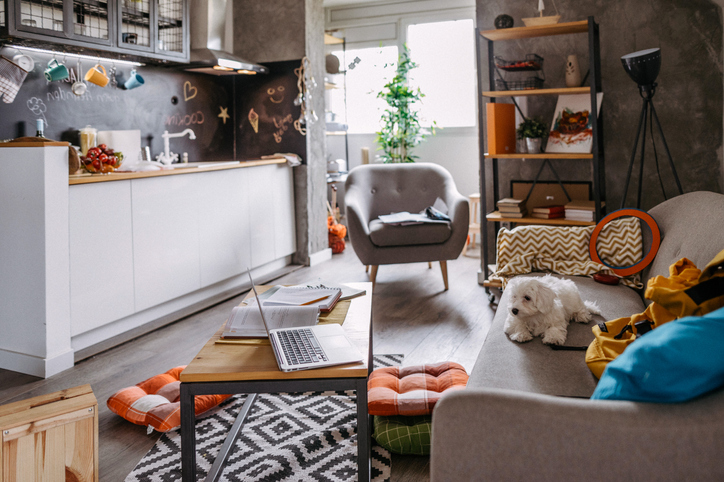Smaller homes come with many benefits like being cheaper to buy, less maintenance as a homeowner and they can also be less expensive to run. They are great starter homes for first time buyers or those looking to downsize further on in life. But if you’re not used to compact living then it can take a while to adjust to a smaller living space and finding the right storage solutions is vital.
Here we have broken down each room in your home and have some top tips for coping with compact living and how to make the most of your smaller space.
Bedrooms
The key storage space you’ll most likely need in your bedroom is for clothes and bedding, so if you can, invest in some built-in wardrobes that make use of awkward spaces like alcoves or even larger cupboards that can be knocked through. Built-in wardrobes can offer floor to ceiling storage which means items that aren’t used on a regular basis can be stored higher up, and out of the way, such as winter bedding, extra quilts and seasonal clothes. Although they can be expensive to fit, especially if you are hiring a joiner to do custom work, you can find affordable flat pack options from IKEA that come in a variety of sizing options that could do the trick.
It’s good to remember to be smart with your storage choices, especially when buying extra furniture as these can start to fill up your small rooms quickly and make the room feel even smaller. That’s why under bed storage, either in the form of boxes, pull out drawers or bed frames that contain built-in storage are ideal as they don’t take up any additional floor space. Again, if you don’t have this already at home, a bed with built-in storage could be a good investment for now and the future.
Bathroom
To make a small bathroom work well, think about re-jigging the layout – would there be more space with a corner toilet, shower cubicle or basin? Also consider the depth of the toilet – some are a lot shorter than others, giving you more useable floor space. If you don’t use the bath, could you save space by replacing it with a shower cubicle? This may put off some buyers when you come to sell but may be worth it if it improves the bathroom for you. If you want to keep the bath, there may be a better option, such as a shorter, narrower or tapered bath.
For bathroom storage, try to avoid having bottles and products stored in the shower itself or around the bath as this will make the room feel cluttered and can make the room feel smaller. Sink vanity units are great storage options as they won’t take up anymore floor space and often store more than you’d think. You can also buy ones that can be fitted underneath your existing sink so there won’t be any need to tear out the old one.
Kitchen
Fitting everything in a small kitchen can be a challenge, especially when it comes to bulkier items like your white goods. If you can, consider moving the washing machine to the bathroom or under-stairs cupboard, for example, and fitting smaller appliances, such as a slimmer fridge-freezer or dishwasher – or do away with that altogether if you can. Clever kitchen designs make more of limited space – try a pull-out worktop or a kitchen island on wheels that can be moved to the side when not in use. It could also double up as a breakfast bar too. Tall wall units, if the ceiling’s high enough, give you more storage by using otherwise wasted space.
Living room
There are plenty of great ways to make your living space feel so much bigger, from rugs that give the illusion of more floor space and fitting wooden flooring instead of carpet. Wall colours such as neutral greys and whites will make the room feel brighter and more spacious.
If you like having a coffee table, go for one that is either a footstool or ottoman that can double up as storage. For one-bedroom apartments or if you tend to have a lot of guests over, turn your living room into a spare room by choosing a sofa that doubles up as a bed.
In some rooms, like your living room or hallway, it’s hard to find wall space for a radiator without putting furniture in front of it, which is pointless. Solve the problem with slim line vertical radiators – they’re ideal when wall space is limited and are handy for drying big things like sheets. Most vertical radiators are only one or two columns deep, which limits the heat output. As well as being a practical solution for small rooms, these radiators are the perfect combination of period elegance and contemporary style, plus they’re a nice feature in their own right.
Whether you’re looking to downsize to something smaller, take your first step on the property ladder or have given up on compact living, you’ll find all the best Scottish properties for sale and to rent at s1homes.com



















